Buy Custom-Roasted Full-Caf Artisan Coffee Here
Free Shipping in Effect
Disclaimers and Important Points to Note Before you Hit “Add to Cart”
Current Single Origin List in Alphabetical Order
Bali Kintamani Natural Process, FTO
 Bali’s coffee shares much in common with Sumatran coffee. Both use Typica hybrids as a legacy of the days when the Dutch brought coffee to Java from Reunion Island. Add the overwhelming local heat and humidity, and you have a coffee that dries very slowly, preserving fruitiness and adding some earthy rustic funk for interest (in a good way.) Bali’s a bit less earthy and herbal than our Sumatra and plenty fruity at the Medium+ roast, going chocolaty and a bit less fruity at a Dark roast. It’s one that I will roast Dark-Dark for its intoxicating aroma and tasty deep tones. Brew in a french press or make a memorable espresso shot.
Bali’s coffee shares much in common with Sumatran coffee. Both use Typica hybrids as a legacy of the days when the Dutch brought coffee to Java from Reunion Island. Add the overwhelming local heat and humidity, and you have a coffee that dries very slowly, preserving fruitiness and adding some earthy rustic funk for interest (in a good way.) Bali’s a bit less earthy and herbal than our Sumatra and plenty fruity at the Medium+ roast, going chocolaty and a bit less fruity at a Dark roast. It’s one that I will roast Dark-Dark for its intoxicating aroma and tasty deep tones. Brew in a french press or make a memorable espresso shot.
Natural Processed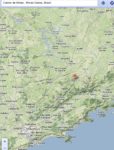 . This is a tasty specialty-quality Brazil natural with a classic Brazilian profile: nutty (more hazelnuts than walnut), buttery heavy body, with an underlying dark chocolate base that emerges as the roast goes darker. There’s not a lot of fruit, but you don’t care due to the big nutty chocolate flavors. Medium roasts emphasize the nutty aspects; dark roasts are all about the bittering chocolate. Did I mention the nuttiness? Makes wonderfully classic chocolaty, nutty espresso shots.
. This is a tasty specialty-quality Brazil natural with a classic Brazilian profile: nutty (more hazelnuts than walnut), buttery heavy body, with an underlying dark chocolate base that emerges as the roast goes darker. There’s not a lot of fruit, but you don’t care due to the big nutty chocolate flavors. Medium roasts emphasize the nutty aspects; dark roasts are all about the bittering chocolate. Did I mention the nuttiness? Makes wonderfully classic chocolaty, nutty espresso shots.
Burundi Kayanza Coop Bourbon Varietal
High-Grown Washed Process
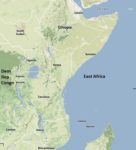 Burundi lies just south of Rwanda and shares the same terroir and capability to produce world class, high-grown (1800-2200 MASL) coffee. It also shares a sad history of the same ethnic violence as Rwanda without the worldwide attention. Nevertheless, important improvements in the coffee industry recently have yielded some hope for lifting its people from poverty and providing us with some really excellent coffee. In spite of the current political unrest, they produced some coffee that can stand proud next to the best Rwandans and Kenyans. I estimate the SCAA cupping score on this lot at 90 points with a profile similar to our Rwanda offering below: brown sugar, raisin, baking spices and mild citrus with a touch of black tea-like astringency. I recommend a lighter-medium roast to get the best range of flavors, but you can emphasize brightness at a lighter roast or mute it by going darker. It’s delicious as espresso, drip, or press. Beautiful coffee!
Burundi lies just south of Rwanda and shares the same terroir and capability to produce world class, high-grown (1800-2200 MASL) coffee. It also shares a sad history of the same ethnic violence as Rwanda without the worldwide attention. Nevertheless, important improvements in the coffee industry recently have yielded some hope for lifting its people from poverty and providing us with some really excellent coffee. In spite of the current political unrest, they produced some coffee that can stand proud next to the best Rwandans and Kenyans. I estimate the SCAA cupping score on this lot at 90 points with a profile similar to our Rwanda offering below: brown sugar, raisin, baking spices and mild citrus with a touch of black tea-like astringency. I recommend a lighter-medium roast to get the best range of flavors, but you can emphasize brightness at a lighter roast or mute it by going darker. It’s delicious as espresso, drip, or press. Beautiful coffee!
Classic Latin American Blend
The Best of Central and South America
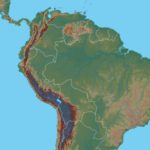 We blended the best washed and natural process coffees from the Western Hemisphere to create a blend most closely approximating what Americans think coffee SHOULD taste like but rarely find. We were going for a pure, excellent cup you can brew any way and that is deeply satisfying at any roast level. Lighter roasts are smooth and sweet, with chocolate, nuts and brown sugar notes and a clean finish. Darker roasts tend toward bittersweet chocolate with a nutty note. Recommended for espresso.
We blended the best washed and natural process coffees from the Western Hemisphere to create a blend most closely approximating what Americans think coffee SHOULD taste like but rarely find. We were going for a pure, excellent cup you can brew any way and that is deeply satisfying at any roast level. Lighter roasts are smooth and sweet, with chocolate, nuts and brown sugar notes and a clean finish. Darker roasts tend toward bittersweet chocolate with a nutty note. Recommended for espresso.
Colombia Tolima/Antioqua Region
Classic Colombian–Smooth and Sweet
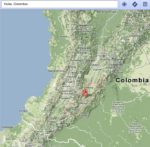 Just because you see Colombian coffee everywhere, it doesn’t mean you know GOOD Colombian. Our high-grown Tolima is less trendy than Huila but it hits the mark for capturing the best of the classic big bodied smooth-tasting Colombian profile. Far from boring, the Tolima has a sweet, intense aroma; big, buttery mouth feel; a touch of brightness, drying walnut mouth feel with lots of brown sugar-toffee notes. While this coffee is versatile at a full range of roasts, emphasis changes by level: brown sugar, graham cracker, drying walnut and slight stone fruit at the lighter and medium roasts. Medium roast, of course, is a bit less bright than the light roast, but it retains all the butter toffee sweetness and just a touch of stone fruit. Darker tones of chocolate and caramelizing sugar emerge at the darker roasts, perfect for a clean, sweet espresso. This one works well for drip, pour-over, french press and espresso. Available in a melange (a mix of roasts) that is especially nice, too.
Just because you see Colombian coffee everywhere, it doesn’t mean you know GOOD Colombian. Our high-grown Tolima is less trendy than Huila but it hits the mark for capturing the best of the classic big bodied smooth-tasting Colombian profile. Far from boring, the Tolima has a sweet, intense aroma; big, buttery mouth feel; a touch of brightness, drying walnut mouth feel with lots of brown sugar-toffee notes. While this coffee is versatile at a full range of roasts, emphasis changes by level: brown sugar, graham cracker, drying walnut and slight stone fruit at the lighter and medium roasts. Medium roast, of course, is a bit less bright than the light roast, but it retains all the butter toffee sweetness and just a touch of stone fruit. Darker tones of chocolate and caramelizing sugar emerge at the darker roasts, perfect for a clean, sweet espresso. This one works well for drip, pour-over, french press and espresso. Available in a melange (a mix of roasts) that is especially nice, too.
Costa Rica Tarrazu’ SHB – Miel Blanco Process
Mild, Delicate, Classy
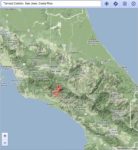 Somewhat delicate sweet and fruity flavors at the lighter end pair with heavier body due to a form of natural processing. Stone fruit (peaches/plums) and sweet berry flavors reminiscent of a dry-process Ethiopian predominate the light roasts, while classic CR semi-sweet chocolate and toasted hazelnuts emerge at the medium-darker roast levels and fruit recedes. The natural miel processing method used (called literally, “honey” due to the syrupy body it imparts, not the taste) adds more body, complexity and fruitiness than we would normally see in a classic washed process Costa Rican coffee, but the overall effect is still very refined and not at all rustic. It shines using drip and pour-over at light roasts, and it makes a standout espresso shot, too. Delicious!
Somewhat delicate sweet and fruity flavors at the lighter end pair with heavier body due to a form of natural processing. Stone fruit (peaches/plums) and sweet berry flavors reminiscent of a dry-process Ethiopian predominate the light roasts, while classic CR semi-sweet chocolate and toasted hazelnuts emerge at the medium-darker roast levels and fruit recedes. The natural miel processing method used (called literally, “honey” due to the syrupy body it imparts, not the taste) adds more body, complexity and fruitiness than we would normally see in a classic washed process Costa Rican coffee, but the overall effect is still very refined and not at all rustic. It shines using drip and pour-over at light roasts, and it makes a standout espresso shot, too. Delicious!
Ethiopia Washed Process (the more citrusy/floral one)
Heirloom Varietals
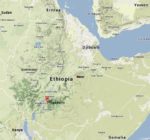 This classic Ethiopian has jasmine-floral-citrus and stone fruit up front, with a semi-sweet chocolate note in the background depending on roast level. Unlike dry process Ethiopians we have enjoyed from Yirgacheffe, this one’s fruit is more restrained and the body is lighter due to washed processing. Light roast is clean fruity/floral with a hint of chocolate and restrained lemonade/floral brightness; medium to dark roast becomes slightly less fruity and more chocolaty. A melange provides both fruity and roasty semi-sweet chocolate. A versatile brewer, it works nicely with pour-over, drip, french press (or SO espresso for the darker roast). If you are afraid of a little tang, I’d order this roasted a bit on the Medium to Medium-Dark side. This is elegant coffee that cupped at 91.4 points on the SCAA scale.
This classic Ethiopian has jasmine-floral-citrus and stone fruit up front, with a semi-sweet chocolate note in the background depending on roast level. Unlike dry process Ethiopians we have enjoyed from Yirgacheffe, this one’s fruit is more restrained and the body is lighter due to washed processing. Light roast is clean fruity/floral with a hint of chocolate and restrained lemonade/floral brightness; medium to dark roast becomes slightly less fruity and more chocolaty. A melange provides both fruity and roasty semi-sweet chocolate. A versatile brewer, it works nicely with pour-over, drip, french press (or SO espresso for the darker roast). If you are afraid of a little tang, I’d order this roasted a bit on the Medium to Medium-Dark side. This is elegant coffee that cupped at 91.4 points on the SCAA scale.
Ethiopia Natural Process (the fruitier one)
Heirloom Varietals, Natural Processing
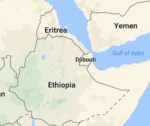 This is a fruity, wild, elegant, extremely fruity Ethiopian Natural from Yirgacheffe, Guji and Sidama in southern Ethiopia, the home of coffee. The natural processing method of the heirloom varietals used yields more wild, sweet fruit and berry flavors with just a dash of lemon peel and a nice floral note, too. It has bigger body than the washed, but the texture is silky, creamy and smooth. This is a versatile and distinctive cup, a stellar performer from pour over to french press to cold brew. The consensus of our customers is that it is best at lightest possible roasts where the berry/fruity flavors are most evident, but we also like it in a melange where a range of roast levels allow for balancing the berries with a bit more roasty chocolaty flavors to complement and add depth. At the medium roast level, the fruit is more fruit punch. For dark roast, please choose the Ethiopia Washed. Note: The lightest possible roast is a City Roast level in coffee roaster lingo. Medium Roast is about Full City, and Medium Dark is Full City +.
This is a fruity, wild, elegant, extremely fruity Ethiopian Natural from Yirgacheffe, Guji and Sidama in southern Ethiopia, the home of coffee. The natural processing method of the heirloom varietals used yields more wild, sweet fruit and berry flavors with just a dash of lemon peel and a nice floral note, too. It has bigger body than the washed, but the texture is silky, creamy and smooth. This is a versatile and distinctive cup, a stellar performer from pour over to french press to cold brew. The consensus of our customers is that it is best at lightest possible roasts where the berry/fruity flavors are most evident, but we also like it in a melange where a range of roast levels allow for balancing the berries with a bit more roasty chocolaty flavors to complement and add depth. At the medium roast level, the fruit is more fruit punch. For dark roast, please choose the Ethiopia Washed. Note: The lightest possible roast is a City Roast level in coffee roaster lingo. Medium Roast is about Full City, and Medium Dark is Full City +.
Guatemala Huehuetenango Washed Process
All Bourbon and Caturra Varietals
 Guatemala can produce some of the finest coffees in the world, famous for their bold, slightly spicy, malty, nutty smoothness. A touch of restrained juiciness with a big buttery body and incredible malty sweetness, it’s everything you crave in a cup of great coffee, without bitterness. I recommend a Lighter-Medium roast for most sweetness and floral/fruit (apple, grape and plum) notes. A solid Medium roast produces that bold, chocolatey, malty spicy classic Guatemala profile. A dark roast will lose much of the jazz and floral/fruity notes, but will emphasize spicy high-percentage dark chocolate and nut/malty notes. Body is buttery with a silky finish. A Medium-Dark roast makes a great espresso shot. This lot is a delicious entry in the NanoRoast collection, very balanced with big body and a smooth finish.
Guatemala can produce some of the finest coffees in the world, famous for their bold, slightly spicy, malty, nutty smoothness. A touch of restrained juiciness with a big buttery body and incredible malty sweetness, it’s everything you crave in a cup of great coffee, without bitterness. I recommend a Lighter-Medium roast for most sweetness and floral/fruit (apple, grape and plum) notes. A solid Medium roast produces that bold, chocolatey, malty spicy classic Guatemala profile. A dark roast will lose much of the jazz and floral/fruity notes, but will emphasize spicy high-percentage dark chocolate and nut/malty notes. Body is buttery with a silky finish. A Medium-Dark roast makes a great espresso shot. This lot is a delicious entry in the NanoRoast collection, very balanced with big body and a smooth finish.
Haitian Jamaica Blue Mountain
Do Good By Drinking Good Coffee
 Haiti shares the Island of Hispanola with the Dominican Republic and is in close proximity to Jamaica and Cuba, sharing the same climate. In recent years, some great nonprofits have come alongside Haitian farmers to replant sustainable farms in that poverty-stricken, deforested country. Our Haitian JBM shows how improved the new Haitian coffee industry has become–and it is reversing the worst effects of the last 70 years of chaos. Win/win indeed! The coffee is fairly delicate and floral, and it roasts best at medium to dark roasts. Considered one of the mildest coffees, our JBM is in the same flavor profile category as other Island coffees, such as Kona and Jamaican JBM. This is one dark roast that can do a pour over or french press with grace. It’s a bit more expensive because I paid a premium toward reforesting, meaning you can claim at least one tree planted for every pound purchased.
Haiti shares the Island of Hispanola with the Dominican Republic and is in close proximity to Jamaica and Cuba, sharing the same climate. In recent years, some great nonprofits have come alongside Haitian farmers to replant sustainable farms in that poverty-stricken, deforested country. Our Haitian JBM shows how improved the new Haitian coffee industry has become–and it is reversing the worst effects of the last 70 years of chaos. Win/win indeed! The coffee is fairly delicate and floral, and it roasts best at medium to dark roasts. Considered one of the mildest coffees, our JBM is in the same flavor profile category as other Island coffees, such as Kona and Jamaican JBM. This is one dark roast that can do a pour over or french press with grace. It’s a bit more expensive because I paid a premium toward reforesting, meaning you can claim at least one tree planted for every pound purchased.
Heart of Africa Blend
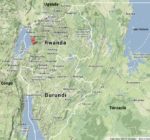 This is a proprietary blend of top-rated East African coffees designed to delight those who avoid dark-roast coffee and who really love all those sweet, jazzy notes emblematic of the coffees of East Africa. Hands down, this is the coffee I want in my cup in the morning. Sweet muscovado sugar, slight raisin/fig and baking spice notes, with a black tea-like astringency that is lively but not obnoxious. In short, it’s the best of the African profile. I recommend it at a lighter-medium roast for optimal sweetness and interest. We also do a melange roast of medium and darker elements for those who want roasty notes in addition to the unique origin flavors. Makes a lively but delicious espresso.
This is a proprietary blend of top-rated East African coffees designed to delight those who avoid dark-roast coffee and who really love all those sweet, jazzy notes emblematic of the coffees of East Africa. Hands down, this is the coffee I want in my cup in the morning. Sweet muscovado sugar, slight raisin/fig and baking spice notes, with a black tea-like astringency that is lively but not obnoxious. In short, it’s the best of the African profile. I recommend it at a lighter-medium roast for optimal sweetness and interest. We also do a melange roast of medium and darker elements for those who want roasty notes in addition to the unique origin flavors. Makes a lively but delicious espresso.
India Aged Monsooned Malabar
When Heat & Humidity is Your Friend
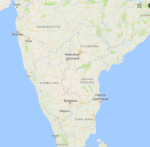 Everyone knows how India swelters in dry heat every year until the monsoon comes–then the heat is moderated slightly from a LOT of humidity. Normally, this might pose a problem for storing a dry seed (coffee bean), but Indian coffee producers have used this annual phenomenon to make a coffee that is really different: Monsooned Malabar. Basically, the dried coffee is laid out on cement floors in covered warehouses and allowed to swell up with monsoon moisture. The “zombie bean” that results seems to incorporate all the funky, wild flavors and aromas of the locale (such as wet loamy earth, very ripe fruit and spice notes) in a coffee that has thick, creamy body and very low acid. It’s one order of magnitude more exotic than Yemeni coffee, I think. Full Disclosure: It’s probably not your daily drinker, but it could be a special treat. We have limited quantities available. Drink this one made by french press or as espresso. Are you adventurous and want to try some? PLEASE NOTE: We sell this coffee in smaller quantities due to restricted availability, BUT you can have a free sample with the purchase of any NanoRoast coffee.
Everyone knows how India swelters in dry heat every year until the monsoon comes–then the heat is moderated slightly from a LOT of humidity. Normally, this might pose a problem for storing a dry seed (coffee bean), but Indian coffee producers have used this annual phenomenon to make a coffee that is really different: Monsooned Malabar. Basically, the dried coffee is laid out on cement floors in covered warehouses and allowed to swell up with monsoon moisture. The “zombie bean” that results seems to incorporate all the funky, wild flavors and aromas of the locale (such as wet loamy earth, very ripe fruit and spice notes) in a coffee that has thick, creamy body and very low acid. It’s one order of magnitude more exotic than Yemeni coffee, I think. Full Disclosure: It’s probably not your daily drinker, but it could be a special treat. We have limited quantities available. Drink this one made by french press or as espresso. Are you adventurous and want to try some? PLEASE NOTE: We sell this coffee in smaller quantities due to restricted availability, BUT you can have a free sample with the purchase of any NanoRoast coffee.
Kenya Bourbon Varietals AA
High-grown Washed Process
 With Ethiopia, Kenya produces some of the highest-rated coffees in the world (this one scored 92.0 on the SCAA scale), but they are in general quite different from Central American or Indos. They are known for their clean, bright acidity (jazzy tang on the palate, not sourness), silky body, and lingering pleasant aftertaste. While most Kenyas are best (IMHO) at a lighter-to-medium roast, this coffee can take the heat to produce an elegant medium-dark roast as well. At the lighter end of the roast range, this classic Kenya has figs, brown sugar and just a touch of brightness that gives it almost a winey note. At the darker levels, acidity and citrusy notes are more restrained while dark and semisweet chocolate notes arise in harmony with the remaining fruit notes. This coffee is competition level goodness at all roast levels. For those wanting elements of both light and dark, or if you want all the nice Kenyan flavors with much lower acidity, try a melange roast. While it shines as a pour over, it makes a really nice jazzy espresso, too. I think french press too easily goes to uncomfortable acidity if allowed to steep for more than 3-4 minutes, so be forewarned.
With Ethiopia, Kenya produces some of the highest-rated coffees in the world (this one scored 92.0 on the SCAA scale), but they are in general quite different from Central American or Indos. They are known for their clean, bright acidity (jazzy tang on the palate, not sourness), silky body, and lingering pleasant aftertaste. While most Kenyas are best (IMHO) at a lighter-to-medium roast, this coffee can take the heat to produce an elegant medium-dark roast as well. At the lighter end of the roast range, this classic Kenya has figs, brown sugar and just a touch of brightness that gives it almost a winey note. At the darker levels, acidity and citrusy notes are more restrained while dark and semisweet chocolate notes arise in harmony with the remaining fruit notes. This coffee is competition level goodness at all roast levels. For those wanting elements of both light and dark, or if you want all the nice Kenyan flavors with much lower acidity, try a melange roast. While it shines as a pour over, it makes a really nice jazzy espresso, too. I think french press too easily goes to uncomfortable acidity if allowed to steep for more than 3-4 minutes, so be forewarned.
Mocha Java–the Authentic Blend
Fruity and Chocolaty
 One of our crowd-pleasers at a medium-dark to dark-dark roast, this authentic Mocha Java has little to do with what coffee bars sell as “mocha” (hot chocolate and coffee). Mocha (or Mokkha) was a port on the Red Sea until it silted up a couple hundred years ago. Because of its location on a main trade route, it was possible to blend coffee from Java with those from the Horn of Africa and Yemen for a savory chocolate and rustic, wildish fruit profile. Our Mocha Java combines a definitely rustic fruitiness with the Oreo cookie chocolate base, big body and a silky finish that is memorable and delicious. Excellent for espresso shots or french press! Pairs wonderfully with milk, too.
One of our crowd-pleasers at a medium-dark to dark-dark roast, this authentic Mocha Java has little to do with what coffee bars sell as “mocha” (hot chocolate and coffee). Mocha (or Mokkha) was a port on the Red Sea until it silted up a couple hundred years ago. Because of its location on a main trade route, it was possible to blend coffee from Java with those from the Horn of Africa and Yemen for a savory chocolate and rustic, wildish fruit profile. Our Mocha Java combines a definitely rustic fruitiness with the Oreo cookie chocolate base, big body and a silky finish that is memorable and delicious. Excellent for espresso shots or french press! Pairs wonderfully with milk, too.
| Size |
| Roast Level |
![]()
Panama Boquete Region
Washed Process Typica and Caturra Varietals
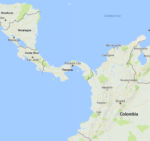 New crop! The Boquete region is located in the west of the country, and the farm is one of the primo fincas that perch high up Volcan Barú. This a beautiful blend of high-quality Typica and Caturra, prepped with care, resulting in a gorgeous cup, especially at lighter medium and medium roasts. It’s one of my original favorites—tasty, no sharp edges, enough zip to keep it far away from flat. We don’t take this one dark in order to preserve the brown sugar sweetness, medium body and well-integrated floral aspects that make this a crowd-pleaser.
New crop! The Boquete region is located in the west of the country, and the farm is one of the primo fincas that perch high up Volcan Barú. This a beautiful blend of high-quality Typica and Caturra, prepped with care, resulting in a gorgeous cup, especially at lighter medium and medium roasts. It’s one of my original favorites—tasty, no sharp edges, enough zip to keep it far away from flat. We don’t take this one dark in order to preserve the brown sugar sweetness, medium body and well-integrated floral aspects that make this a crowd-pleaser.
It’s one of my original favorites—tasty, no sharp edges, enough zip to keep it far away from flat.
Papua New Guinea Eastern Highlands
Washed Process Typica
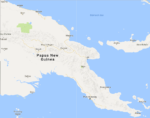 This is a clean PNG selection from a leading estate in the Eastern Highlands that’s a cousin to our Sumatra coffees. Made from Typica hybrids planted around 1960, this coffee is a bit on the herbal, rustic side, but much smoother than a classic wet-hulled Sumatra. The profile is savory dark chocolate and spices throughout the roast range, with medium roasts emphasizing the earthy spice notes and darker roasts tending toward savory dark chocolate with a hint of spice. All are low acid, medium bodied and finish in the medium range. We roast it in a range slightly darker medium to pretty dark. I’d avoid pour overs for the darker roasts; french press will show off all the dark roasty flavors best. It also makes a nice dark espresso shot.
This is a clean PNG selection from a leading estate in the Eastern Highlands that’s a cousin to our Sumatra coffees. Made from Typica hybrids planted around 1960, this coffee is a bit on the herbal, rustic side, but much smoother than a classic wet-hulled Sumatra. The profile is savory dark chocolate and spices throughout the roast range, with medium roasts emphasizing the earthy spice notes and darker roasts tending toward savory dark chocolate with a hint of spice. All are low acid, medium bodied and finish in the medium range. We roast it in a range slightly darker medium to pretty dark. I’d avoid pour overs for the darker roasts; french press will show off all the dark roasty flavors best. It also makes a nice dark espresso shot.
Sumatra Lake Toba TP Rainforest Alliance
Most people think Sumatra only comes in dark, dark, dark, but ours doesn’t. Our Triple Pick, the highest grade produced in Sumatra, is a good example of the classic Sumatran profile at darker roasts (bold, brooding, rich and intense, with pronounced flavors of dark chocolate, rustic cedar wood smoke, herbs and peaty leather with heavy, smooth body and a long finish,) but we include it because it can be a very different take on coffee flavors. At the medium roast points, complex wild rustic and sweeter, exotic fruity flavors dominate, and chocolate notes are way less pronounced. Going darker, the complexity diminishes, turning to smoky, peppery bittersweet/savory chocolate flavors–a more bold, rustic cup. We recommend the Melange, a blend of roast levels, to capture the dark roast flavors and the origin flavors together. The darker roast levels are perfect for espresso or french press. The Medium to Medium-Dark roasts can provide a sweet and complex pour-over or drip as well.
TOUR OF COFFEE SAMPLER
A sample of all the major growing areas OR just your favorites
 Giving a gift and wanting something special for your coffee lover? The Tour of Coffee Sampler includes 8 oz of six (48 oz total) contrasting coffee profiles and a map showing where your specific coffee selections were grown with witty commentary (or not, as you wish.) We choose the best of whatever is available in each category (Latin, Island, African and Indo, plus a contrasting lighter/darker roast pair) and roast them to your preference. Degree of roast will vary according to the optimal roast range of each bean selected. If you have any special preferences, please email us and we can collaborate to make sure you get the perfect selections.
Giving a gift and wanting something special for your coffee lover? The Tour of Coffee Sampler includes 8 oz of six (48 oz total) contrasting coffee profiles and a map showing where your specific coffee selections were grown with witty commentary (or not, as you wish.) We choose the best of whatever is available in each category (Latin, Island, African and Indo, plus a contrasting lighter/darker roast pair) and roast them to your preference. Degree of roast will vary according to the optimal roast range of each bean selected. If you have any special preferences, please email us and we can collaborate to make sure you get the perfect selections.
Thanks to Google Maps for helping us to show where your coffee comes from!

